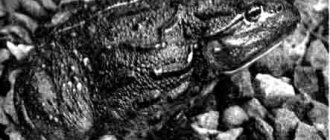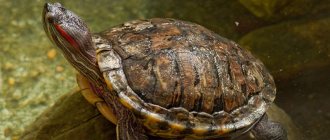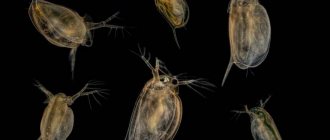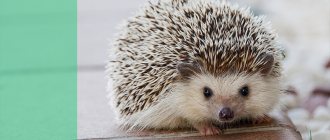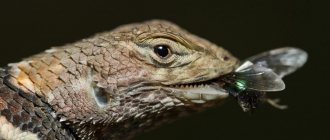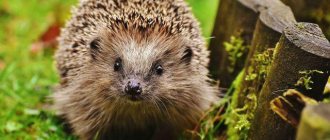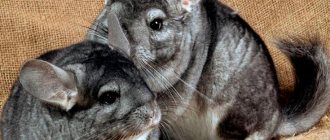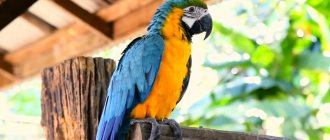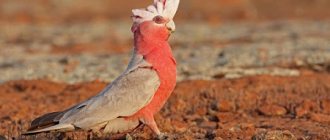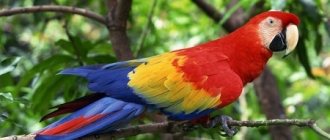Almost every corner of the planet is inhabited by amphibians. There are more than 5,000 species of frogs around the globe. The most suitable habitats for them: tropics, fields and meadows with high humidity, swamps, fresh water reservoirs. Interested to know what frogs eat in nature? Depending on the habitat, several species are distinguished - those that live:
- only on land;
- exclusively in water;
- on land and in water;
- on trees (can fly in a jump at a distance of up to 15 m).
But, regardless of the species, all frogs begin life in water.
general characteristics
The frog family has a distinctive appearance, characterized by the absence of a distinct neck. As a result of this feature, the impression is formed that their head is one piece together with the body. Frogs were included in the order of tailless frogs due to the absence of a tail, which is also considered their characteristic difference.
Frogs have unique vision that allows them to control their entire environment within a 360-degree radius.
Amphibians have a fairly large, flat head, with convex eyes on the sides. Frogs have two pairs of eyelids - located below and above. Under the lower eyelid is the nictitating membrane, which is also called the “third eyelid.” At the back of the eye is the eardrum, which forms as an area hidden by thin skin. Amphibians also have a rather large mouth, above which two nostrils with natural valves are visible. Frogs have small teeth in their mouths.
The front legs of frogs are equipped with four small toes, which are shorter than the hind legs. The hind legs are more developed and end in five toes. Between them is placed a membrane formed from the skin, thanks to which the frogs feel good in the water.
Amphibians have no claws on their fingers, which is a distinctive feature of the family. In the back of the body there is a cloaca, through which processed food components are excreted. The frog's body itself is completely covered with bare skin, on which there is a special mucus secreted by the subcutaneous glands.
The size and weight of frogs directly depend on their variety. In general, their size is in the range of 0.8-32 cm. The African goliath frog is considered the largest. Its dimensions reach up to 50 cm and weigh several kilograms.
Some species of frogs do not have poisonous coloring, but are able to imitate it to protect themselves from potential enemies.
In addition to size, frogs also have a wide variety of colors. Amphibians are often distinguished by variegated body colors, which correspond to their natural habitat. The specific color allows them to camouflage among plants and herbs, remaining unnoticed by enemies.
Often the bright color becomes evidence of the poisonousness of the frog, which also scares away their natural enemies. Toxic substances are produced by glands located on the skin. Substances can be dangerous not only to other animals, but also to people.
The frog's original adaptation is considered to be its hearing aid, which allows it to adapt to living conditions in the border zone located between land and water. Frogs perceive sounds through three channels. In the air, sound waves are perceived by the cells of the inner ear, which show themselves to be the most sensitive. Sounds that travel on land are perceived by the bones and muscles of the paws and enter the inner ear through the cranial bones. Sounds in the aquatic environment are felt by the skin and enter the inner ear through the circulatory system.
Thus, frogs learned to cope with the difficult task of organizing the most comfortable conditions to adapt to complex living conditions located on the border of several environments.
Poll: Have you ever held a frog in your hands?
Yes, I did
73.33%
No, I didn't hold it
26.67%
Voted: 15
Interesting Facts
What does a frog eat and how does it do it? They, like toads, are insectivorous animals. Frogs have teeth only on the upper jaw, and toads do not have them at all, so they have nothing to bite off pieces of food with. Due to these features, food is swallowed whole by frogs and toads. They catch their prey with the help of their original tongue - long, strong and forked at the end. It is thrown out of the mouth with lightning speed in the direction of the victim, and then, due to the fact that it is sticky, it returns back with the prey already stuck.
Another interesting fact is that food enters the esophagus thanks to the eyes. When blinking, the eyes plunge deeper, pushing food into the esophagus.
Where do frogs live
The habitat of frogs is extremely wide. They can be seen on all continents except Antarctica. Their appearance is also recorded in most oceanic islands. Frogs are comfortable living in a temperate climate, but a number of representatives of the population live in tropical and subtropical conditions.
In the initial stage of development, fresh water bodies become the characteristic habitat of frogs. Adults live on land near rivers and lakes, tending to be close to places with high levels of humidity. Swampy areas are also suitable for them to live.
Frogs do not like the cold, so they are practically never found in Arctic latitudes.
However, there are several species that have adapted to these living conditions. A large number of amphibians can be found in the tropical latitudes of Asia and Africa.
Elena
Ask a Question
Question to the expert
How long do frogs live?
The lifespan of frogs directly depends on their species. In general, the average is 10-20 years. In their natural environment, frogs have quite a lot of enemies, as a result of which they often do not live to old age. However, if nothing threatens them, for example, in terrariums, frogs can live for 20 years.
Spreading
This family (true frogs) belongs to the order of tailless amphibians. The composition of the latter is numerous, including 32 genera and about 400 species. Most of them are inhabitants of the jungle (humid tropics).
Central Russia is mainly inhabited by species of the gray and common toad. They are widespread in Russia to Sakhalin, as well as throughout Europe and Africa (northwest).
Most of these amphibians have a modest, inconspicuous color, but some can have quite bright colors, especially for poisonous species that live mostly in the tropics.
What do frogs eat
Frogs are among the carnivores as they feed on food of animal origin in the form of various insects. These are amphibians that are capable of eating large quantities of annoying insects like mosquitoes. Their diet also consists of butterflies and small invertebrates. Larger frog species have ways of eating larger animal objects. For example, cannibalism flourishes among frogs: they are capable of eating not only their children, but also smaller relatives.
Most species of frogs are characterized as extremely useful for people, since these amphibians destroy a large number of insects, including harmful ones.
There are a large number of varieties of frogs, among which there are also omnivorous amphibians, capable of eating berries and fruits along with animal food.
Frogs hunt using their long, sticky tongue, but they can also easily catch insects on the fly.
Due to the fact that frogs are considered quite ancient amphibians, over the entire period of evolutionary development they have developed qualities that are important for survival - unpretentiousness and indiscriminate eating. A small amount of food does not become a problem: frogs can go hungry for more than a week.
If a frog currently has a large amount of food available, it will eat whatever is at hand. The diet consists of:
- caterpillars;
- bees;
- os;
- Zhukov;
- dragonflies;
- larvae;
- snails
The tastes of all frogs in relation to objects of animal origin are almost identical. Moreover, some species are also capable of eating plant foods, while others are exclusively predators by nature.
Some species of frogs are capable of eating not only their tadpoles, but also their fry. There are also cases of frogs eating chicks.
One frog eats about seven insects per day. During the waking period, which occurs from mid-April to mid-October, they are capable of exterminating a significant number of insects, which makes them important assistants in housekeeping.
Tadpole food
The larval stage is very similar in different species of Ranidae, so we can consider it using the example of the lake frog.
Tadpoles that have just hatched from eggs do not have a mouth opening at all. In the larvae, the embryonic supply of nutrients runs out after about a week, when their length exceeds 1.5 cm. The mouth breaks through, and the tadpole begins to feed on its own. The main food of tadpoles is unicellular algae. Protozoa flagellates, molds and other microorganisms are random impurities, but are also absorbed by the body.
The tadpole's mouthparts are excellent for scraping algae deposits from underwater surfaces. A semblance of a strong “beak” is surrounded by fringed lips, of which the lower one is noticeably larger and lined with rough growths. Tadpoles feed during the day, staying in well-warmed water near the coast and in shallows. At times they form huge accumulations - up to 10,000 in one cubic meter of water. It is not for nothing that among the ancient Egyptians the image of a tadpole meant the number 100,000, i.e. “very many.” But not all of them survive. The frog larva serves as food for fish, birds, swimming beetles and other inhabitants of the reservoir.
The luckiest of the tadpoles survive to the stage of metamorphosis and turn into a young frog. Fingerlings are very voracious. The volume of their stomach when full exceeds one fifth of their total weight. There is one interesting detail: if there is not enough animal food in the reservoir, the herbivorous tadpole overwinters in the larval stage, postponing the transformation from vegetarian to predator until spring.
Features of character and lifestyle
Recommended by topic
Monitor lizards Chameleon Turtle
Frogs can be distinguished as a separate, unique family due to the fact that they are freely able to move on land through large jumps over significant distances, easily climb trees, dig underground burrows, swim and run well.
Due to this anatomical feature, frogs can feel good both on land and in the aquatic environment. However, among a large number of species of amphibians, there are frogs that go to water bodies only at the time of mating season and reproduction.
Frogs become active at different times of the day, which is associated with their species. Thus, some species choose to hunt only in the dark, others are active throughout the entire time and are able to hunt both during the day and at night.
A characteristic feature of frogs is their ability to absorb oxygen through their skin.
The lungs of frogs are designed primarily to produce characteristic sounds reminiscent of croaking. Thanks to the presence of sound bubbles and resonators, the animal can vocalize a wide range of sounds. This becomes especially important at the time of reproduction, as loud sounds help frogs attract partners of the opposite sex.
Adults periodically shed their skin and quickly eat it, after which they wait for new skin to grow. The skin regenerates quickly and has all the necessary functions for the frog to survive.
Almost all members of the family choose a sedentary lifestyle. Most, if necessary, are able to migrate short distances, which they do during the mating season.
Frogs that live in temperate climates fall into a kind of torpor in winter, waiting for the arrival of spring.
Question to the expert
How long do frogs live?
The lifespan of frogs directly depends on their species. In general, the average is 10-20 years. In their natural environment, frogs have quite a lot of enemies, as a result of which they often do not live to old age. However, if nothing threatens them, for example, in terrariums, frogs can live for 20 years.
Frogs love to jump on wet grass. At this moment, with the help of dew, they replenish their water supply and dates with the help of the skin. At the same time, in cold and dry weather conditions, frogs crawl into shelters, which are small fir trees, stumps, snags or brushwood. If there are no similar objects nearby, frogs can burrow into the foliage, forming a makeshift bedding for themselves.
Despite their good jumping ability, frogs cannot be called fast walkers.
In a week's journey, they can cover a path whose length is only 30 meters. Only in exceptional cases can the range of their movements during this period of time increase to half a kilometer. This speed does not give frogs the opportunity to escape from natural enemies, so they have to choose other defense tactics. Thus, amphibians prefer to hide from predators and not be seen by them. This can be done using their ability to change color, adapting to environmental conditions: foliage, bushes and soil.
For example, the color spectrum of the grass frog is characterized by a wide variety of colors. This is due to the fact that this species spends a significant amount of time on land, where a wide variety of colors are found. And, for example, the pond frog spends most of its time in water and prefers to hide among green plants. As a result, its palette of available colors ranges from dark green to yellow-green.
"Diet" of toads
Toads, unlike frogs, which hunt during the day, obtain food at dusk and at night. This species has an excellent appetite, they are ready to eat:
- insects;
- shellfish;
- caterpillars and worms;
- bedbugs
Toads are one of the few species of animals that eat slugs. Researchers have found that more than 60% of the insects consumed by toads are pests of agricultural plants.
Reproduction of frogs
Recommended by topic
Vultures Mole 9 Best premium dry cat food – rating 2021
According to the nature of their behavior, frogs are divided into two varieties: those that reproduce seasonally and those that reproduce spontaneously. In the first case, the mating season comes annually: its beginning always falls within the same season. In the second case, spontaneous reproduction occurs due to the formation of conditions appropriate for this.
Amphibians that live in tropical conditions begin their reproduction during the rainy season. Species that live in temperate climates begin to reproduce with the arrival of spring, when they emerge from hibernation.
Frogs use external fertilization. When spawning, the male sits on the female’s back and covers the eggs, which come out, with his seed. The caviar has a shell that allows oxygen to enter and clusters into dense formations that have a round shape. Some species that live in South Africa secrete copious, highly foaming liquid, due to which the eggs end up in a kind of nest. After some time, the foam hardens and the incubation process begins, after which offspring appear.
The duration of maturation of future offspring depends on the variety of frogs, as well as on environmental conditions.
Before the breeding season, frogs form numerous groups. Males try to occupy available elevations in order to broadcast from them. This helps them attract the attention of females with characteristic sounds, noticeable even at a great distance.
The number of eggs formed depends on the type of frog. So, they range from a few dozen pieces to several tens of thousands of pieces. The incubation process itself is in the intermediate range from 3 to 10 days. After birth, newborns develop rapidly, first turning into tadpoles, and then becoming similar to adults, but smaller in size. This period occurs over 40-120 days - different for each species.
Tree frog tadpole
Most species of frogs lack attachment to newborn offspring, as a result of which the young frogs become prey for larger relatives. The exception is bullfrogs, which protect tadpoles from natural hazards.
Kinds
There are currently several hundred species of frogs. Representatives of each species differ in their behavior, preferences, eating habits, and appearance. What they all have in common is the absence of parotid glands. This is one of the properties in which frogs differ from their closest relatives, toads. Among the most notable varieties of amphibians are the following.
Dominican tree frog
At first glance, this frog seems extremely clumsy, and all its movements seem to be quite difficult for it. This is due to distinctive anatomical features, in particular, the presence of an overly large head. At the edges there are large black eyes, which are closed by a fold of frontal skin. The frog's mouth is wide.
One of the distinctive features of the Dominican tree frog is the ability to change body color if necessary. This can be caused by both external factors, for example, sudden changes in the weather, and internal ones, for example, a change in mood.
The change in color depends primarily on body temperature and is compared with the laws of physics: dark objects absorb heat, light objects reflect it. At the same time, the color is influenced by both the temperature itself and the background color, degree of illumination, and humidity. Frogs sense all these natural factors through their skin, which is confirmed by numerous experiments conducted with the participation of blind frogs.
The Dominican tree frog is one of the predators that feeds on everything they can handle on their own. If a frog goes hungry for a long time, it can even eat its own children. While eating prey, the Dominican tree frog makes sounds that resemble the sound of “quack-quack”, which expresses an extreme degree of glee.
pond frog
This is a remarkable resident of reservoirs, which is found both in Russia and in other countries. The frog got its name due to the fact that ponds are considered its characteristic habitat. A feature of this species of frogs is considered to be their unpretentiousness in choosing lakes, ponds or rivers that will serve as their main habitat.
Pond frogs settle in any water bodies where water lilies are present, and there is also enough food in the form of midges. The size of such frogs is about 10 cm. They have green-yellow skin, which is covered with brown spots. There is a narrow stripe in the center of the back. Well-developed eardrums are considered a characteristic feature of the species.
Edible frog
It is believed that the closest ancestors of this species of frog were hybrids that were the result of crossing a lake and a pond variety. As a result, this type of frog has a light green tint, which is diluted with beige colors at the front. Black stripes of varying widths run from the head to the hind legs.
The frog received the title “edible” due to the fact that its legs are one of the delicacies used in French cuisine. Such frogs are found mostly in Europe, where they settle in reservoirs convenient for them. They are quite picky in terms of choosing a place to live. If frogs notice a lack of current in a pond, they will not settle there.
Australian tree frog
This variety is considered one of the most attractive in the opinion of ordinary people. Its color is bright lime green, with the chest being somewhat lighter than the back. On the entire surface of the body there are black dots that are almost invisible at first glance. The skin color is well complemented by the yellow-gold color of the frog's eyes. The Australian tree frog can change body color, becoming turquoise or light blue.
Charming leaf climber
This is a representative of the species of poisonous frogs, whose body has a noble black and golden color. The frog also has orange stripes on its back. Its muzzle is somewhat flattened, its eyes are large and black. At the same time, the paws differ from the general color of the body, which gives the impression that they seem to be separate. The legs themselves are gray and have black circles, which is reminiscent of another species of frog - the marsh tree frog.
The charming leaf climber is one of the least poisonous amphibians. He almost never attacks others and strives to lead a friendly and solitary lifestyle. At the same time, the charming leaf climber cannot be called careful and attentive. It does not hide when enemies approach, as it has a special toxic substance that many animals fear. Others are afraid to engage in open conflict with it, even despite the absence of strong poison.
Transcaucasian frog
This species is considered one of the medium-sized ones: its size is about 8 cm. A characteristic feature of the Transcaucasian frog is the presence of a pink belly. Previously, this species could often be found in the Krasnodar Territory, but human activity and pollution of the frog’s natural habitats contributed to a sharp decline in the number of amphibians. Currently, Transcaucasian frogs are considered an endangered species, which is listed in the Red Book.
Blue dart frog
Natural enemies of frogs
Frogs in their natural habitat have quite a lot of natural enemies. This is especially true for young individuals, who are almost completely deprived of protection. Among the main enemies of frogs are dragonflies and leeches that attack small frogs. Adults most often encounter various predatory fish and birds. In addition, they are attacked by snakes or vipers. Frogs are an integral part of the diet of waterfowl and predatory animals, such as water rats.
Habitat
The lake frog is an amphibian that has become very widespread. It lives in Central and Southern Europe, Central and Near Asia, North Africa. The species is quite common in the Crimea, Kazakhstan, the Caucasus and Eastern Europe. Induced in Kamchatka (unintentionally), where it quickly adapted. There, its distribution is mainly associated with the presence of hot springs and thermal ponds.
In the Tomsk region, large populations can be observed on non-freezing lakes, reservoirs, reclamation canals, where warm water is discharged from power plants, residential buildings and enterprises.
Varieties
One of the most popular domestic species is the clawed frog, and it is the albinos (light with a pink tint) that become the inhabitants of aquariums in most cases. These are unpretentious amphibians, although they may seem like gourmets when it comes to food. Their body rarely grows more than 8 cm in length.
One individual needs 10 liters of water for its conditionally comfortable existence. The water temperature should be around 18–22°C. To equip a house for such a resident, you need a filter: without it, it will not be possible to cope with the volume of dirt produced by the frog. It is imperative to close the aquarium with a lid or glass with a gap. If you leave the “door” to the tank open, then you will then look for your Zelenka or Nikanor throughout the house.
When it comes to food, the white clawed frog prefers medium-sized bloodworms, daphnia, and small earthworms. The frog will not refuse a piece of lean meat. The main thing is not to overfeed your pets: these are voracious creatures, they do not follow diets, but they are at risk of obesity. An adult frog needs to be fed twice a week, but growing amphibians eat more often - 4-5 times a week. It is interesting that aquarium inhabitants hold food with their paws, quickly finger them, and push the tasty morsel towards their mouths.
Among the disadvantages of the clawed frog, one can note attempts on small fish. Neons or guppies will definitely become prey for an amphibian if you decide to make them neighbors. And clawed frogs are real dirty: they crap and also dig up the soil in a destructive manner. Plants are also pulled out and broken.
Among amphibians there are several popular species.
Hymenochirus. Miniature frogs grow on average up to 4 cm. These are slimmer frogs than claw frogs: they have thin legs, a less rounded body, and a pointed muzzle. They can live comfortably even in a 5-liter jar. The animals are thermophilic and do not tolerate frequent changes of water.
They have difficulty getting used to stationary food, because they are predators by nature. They also like to dig up the soil and raise all the rubbish to the surface of the water; these amphibians cannot be called neat.
Real amateur zoologists will want to have baby frogs at home in order to study them (and not just know their names), keep observation diaries, and take care of them.
Lifestyle
The amphibian prefers to live in fairly deep (more than 20 cm) and permanent bodies of water. As a rule, they are oxbow lakes and river banks, ditches, lakes, and ponds. The lake frog (there is a photo in the article) is active almost all 24 hours and only on particularly hot days or hours does it prefer to hide in near-water or aquatic vegetation. It hunts for insects mainly on land or on the shore. It is there that she can be found in the warm season between noon and five o’clock in the evening. Noticing danger, the frog hides in the water.
For wintering, the total duration of which is about 230 days, it chooses the same reservoirs in which it lives. It happens that during the warm season, frogs migrate in search of cooler and deeper water. The species leaves for wintering when the water temperature drops to +8 - +10°C. If the reservoir does not freeze for the winter, then the amphibian can be active throughout the winter.
Growing conditions
It’s difficult to say that aquarium frogs are the cutest creatures. Fish are cleaner and less aggressive than amphibians. But lovers of wildlife, who are ready to organize mini-ecosystems at home, prefer to have frogs instead of silent fish (or together with them). Out of great love for zoology, you can join the ranks of the owners of such unusual pets and care for them.
Interestingly, the clawed frog, ready to become your pet, is the first vertebrate that has been cloned. And another interesting fact: about 100 years ago, the clawed frog was used as a pregnancy test. If you inject her with pregnant urine, she will begin spawning under the influence of hCG.
Because frogs are interesting zoological objects, many people do not view amphibians as living aquarium toys. They are serious about keeping amphibians, caring for them, and making observations. And they carefully study all available information in order to allow the underwater inhabitant to live a completely comfortable and happy aquarium life.
Requirements for an aquarium
If you are keeping a couple of large frogs, then the approximate volume of the aquarium should be about 100 liters. The tank needs good filtration and low aeration. The toaded toads will live in an aquaterrarium - a special device. A couple of adult toads should expect a tank of at least 5 liters.
For Shportsevs, 10-20 liters is enough for two. There must certainly be enough hiding places in the aquarium, because this species prefers reclusiveness to a “secular” lifestyle.
Water
The basis of proper preparation is to let the liquid settle for 3 days, this reduces the amount of chlorine in it. Amphibians are unpretentious to the level of acidity and water hardness. Experienced aquarists advise not to pour it out when changing the water in the tank. The water that has been settled and drained from the sediment is suitable for filling a fish tank. The water temperature is quite high - from 22 to 28°C for different types of amphibians.
Priming
Large pebbles will be required as soil for popular species of aquarium inhabitants. For American pipa, fine gravel will also be suitable. Fire-bellied toads like sand and clean gravel, while toaded toads prefer pebbles.
Plants
Plants, if present in the aquarium, can only be hard-leaved. They can only be planted in pots, otherwise the frogs will quickly start digging. It’s good if the plants form entire thickets in the water house, the frogs will like to hide behind them.
It should be noted that frogs, like all living beings, are susceptible to disease. Some diagnoses of aquarium amphibians are quite common.
- Nematode infection. Amphibians become gray, rough, and their skin peels off. They lose weight very quickly, and when scraping the skin, you can actually notice millimeter-sized worms.
- Fungal diseases. More often, the fungus affects injured areas of the skin, where a cotton-like coating is formed that can move throughout the body.
- Red paw. This is the name for a bacterial infection that causes red spots to appear on the frog’s legs and face.
- Dropsy. Another bacterial infection, in which the amphibian swells like a balloon, swells, and the body loses its usual contour.
Frogs are treated with products for tropical aquarium fish, selected according to the causative agent of the disease. If there are several frogs in the container (or they live with fish), the sick pet will have to be isolated. Obese frogs and pets living in uncomfortable conditions are more susceptible to diseases.
Housing for agile jumpers
The requirements for “living space” for frogs are modest: even a 3-5 liter jar will suit small individuals, but for ease of observation it is better to use an aquarium with a capacity of 20 liters or more (50-60 liter is already a luxury). It should be remembered that frogs like to hide in secluded places, actively dig in the ground and, much more than fish, pollute the water with their secretions.
The main disadvantages of clawed frogs are their large size and predatory habits. If they are placed together with fish, the frogs will definitely eat all the smaller and weaker neighbors. Peeps are only dangerous to small things the size of guppy and neons. And for the completely harmless Hymenochirus, on the contrary, the proximity of large, voracious and cocky fish is extremely undesirable.
Anyone who keeps water frogs must remember that the aquarium must be covered with glass or mesh. Claw frogs are agile jumpers. They can suddenly (usually at night) leave their home for no apparent reason, and then they will inevitably die quickly from drying out. Hymenochiruses are also capable of jumping out of an aquarium, not to mention pips, which can climb vertical glass well thanks to the mucous membrane of the lower part of the body. The glass covering the aquarium, of course, must have a sufficient number of ventilation holes: after all, frogs breathe by rising to the surface of the water and swallowing atmospheric air.
Once on the floor, the clawed frog demonstrates amazing agility, sliding on its wet belly, trying to return to its native element as quickly as possible. It is difficult to catch an incredibly slippery jumper: even when clenched in a fist, it “seeps” between the fingers, becoming almost flat, or, having turned into a lump of muscles, desperately kicks and kicks, trying to scratch the hand that grabbed it.
It is better to use fine river gravel or granite chips 4-6 millimeters in size as soil in the aquarium. Such soil is inconvenient to stir up, and it will not muddy the pond. Sand, on the contrary, contributes to the accumulation of silt, frogs in search of food stir it up, and the water in the aquarium becomes dirty. However, for pipidae this does not matter; they only do not like an oily film on the surface of the water, which prevents them from swallowing air.
Plants suitable for a “paddling pool” are large enough, with strong stems and leaves, and a powerful root system. Considering the habit of frogs to dig under unstable objects, the lower part of the plant bushes should be covered with stones.
Soil and plants decorate the pond and provide biological balance. However, with good filtration or frequent water changes, frogs feel great in a completely empty aquarium with a couple of clay shards-shelters at the bottom. By the way, you should not use powerful filters: being inhabitants of stagnant waters, pipidae do not like rapid flows with bubbles.
Frogs are less sensitive to water quality than the most unpretentious fish species. When cleaning the aquarium, use regular tap water for replacement, which has been left to sit for one to two days. Naturally, sudden changes in temperature should be avoided. Blowing water with a microcompressor, despite the pulmonary breathing of amphibians, is useful, but if it is not there, it is also not a problem. An interesting feature of Hymenochirus was noticed by amateurs. It happens that a “herd” of one and a half dozen specimens sits in a simple 3-liter jar, without any purging or filtration, in muddy “old” water - the health of each frog is excellent, but transplant them into a decorative aquarium, ideal, from a human point of view , conditions - illnesses begin.
Hymenochirus are the most capricious of water frogs. It is advisable to maintain the water temperature for them at least 20, and preferably 24°C, since in cool water the body’s resistance to infectious and fungal diseases sharply decreases.
Dwarf pipas also love warmth, but are more tolerant of low temperatures.
The optimal temperature for keeping clawed frogs is normal room temperature, that is, 18-22°C.
It must be remembered that frogs are quite nervous and impressionable creatures. They do not like loud noises, such as knocking, near the aquarium. In a panic, the frogs begin to rush about sharply, hitting walls, stones, plants, lifting silt from the bottom. This timidity does not go away for the rest of their lives, so treat it with understanding. At the same time, frogs easily get used to taking pieces of meat from a knitting needle, tweezers, and even from their hands.
Classification, representatives of the order Rodents
In total, as of 2005, 2277 species of rodents were described. In the past, they were divided into three suborders based on the structure of the jaw muscles. Today there are 5 suborders and more than 28 families.
Suborder Myomorpha
Consists of eight families:
- mouse;
- mouseworms;
- jerboas;
- mole rats;
- spinaceae;
- hamsters;
- hareliphamsters;
- mouse-hamster.
Almost 2/3 of all rodent species belong to one single mouse family (Muridae). This family contains 1,303 known species, and this number is constantly increasing as a result of new discoveries. Murids are distributed throughout the world, including Australia and New Guinea, where they are the only land-based placental mammals (not counting the recently introduced rabbits). They represent the family mainly of mice and rats.
Field mouse (Apodemus agranius)
Representatives of the mole rat family (Spalacidae) are most adapted to life underground. Their eyes are completely hidden under the skin, and their ears and tail are absent.
Common mole rat (Spalax microphthalmus)
To a greater or lesser extent, all representatives of the jerboa family (Dipodidae) are adapted for movement by jumping or rebound running.
Long-eared jerboa (Euchoreutes naso)
Suborder Squirrel-like (Sciuromorpha)
Consists of three families:
- squirrel;
- aplodontiaceae;
- dormouse.
The squirrel family (Sciuridae) is the second most diverse after the mouse family (including 273 species). Representatives of squirrels are distributed throughout Europe, Africa, North and South America. The common squirrel is its most famous representative. This also includes gophers, chipmunks and marmots.
Common squirrel (Sciurus vulgaris)
Dormice (Gliridae) are a cross between mice and squirrels in appearance. They are the only rodents that do not have a cecum, indicating a low amount of cellulose in their diet.
The only species of the family Aplodontiidae is Aplodontiidae (mountain beaver).
Suborder Beavers (Castorimorpha)
Presented in three families:
- beavers;
- gopheraceae;
- pouchhopper.
Beavers (Castoridae) are large rodents with cheek pouches and strong limbs. The most famous, of course, is the beaver. It is famous primarily for the fact that it can change the landscape in its habitat. Using powerful cutters, he cuts down trees, building dams and huts from this material (more about beavers in this article).
Representatives of the gopher family (Geomyidae) spend most of their lives underground in their own burrow system. Outwardly they look like moles.
Plains gopher (Geomys bursarius)
Sacrifuges (Heteromyidae) are nocturnal burrowers that inhabit diverse landscapes in the Americas.
Suborder Porcupines (Hystricomorpha)
This suborder unites about 300 species in 18 families (agoutiaceae, porcupines, pigs, mole rats, chinchillas, rock rats, etc.).
Most of them are large rodents that live within South and Central America. Among them, the most famous are porcupines, guinea pigs, mole rats, nutria, chinchillas, etc.
North American porcupine (Erethizon dorsatum)
Suborder Spiketails (Anomaluromorpha)
Includes 2 families:
- long-legged;
- spiny-tailed.
The first family (Pedetidae) is represented by one species - the long-legged, living on the African plains. This animal looks like a miniature kangaroo.
Strider (Pedetes capensis)
Spiketails (Anomaluridae) from the rain forests of Africa are similar in appearance to squirrels, but are very distantly related to them.
Squirrel Spiketail (Zenkerella insignis)
Feed additives
Frogs in an aquarium should receive not only food, but also vitamin and mineral supplements. They can be bought at pet stores. But the problem is that for amphibians there is no clearly defined norm for adding fortified food, so the portion has to be calculated approximately “by eye”.
It should be remembered that exceeding the dose of vitamins, especially such as fat-soluble “A”, “O”, “E”, can sometimes lead to the death of pets.
You should also feed your frog at home with foods containing calcium; it is especially important to follow this rule in relation to young amphibians. The frequency of calcium supplementation depends on age:
- young individuals should be offered this feeding every day,
- for older people – once a week.
Some products that contain calcium include:
- crushed white school chalk,
- limestone,
- ground shells of raw chicken eggs.
You should also not forget that calcium is well absorbed by the body only in combination with vitamin D3; it is used to promote its production.
